I feel a sense of calm as I lie on dried leaves in a dark room, gazing upward at emerald mountains made from synthetic fabric. A recording is playing the sounds of birds and insects, as I ponder Chinese poet Xin Qiji’s (辛棄疾) verse: “I see the green mountains as tantalizing. Likewise the mountains think the same about me.”
Feel your heart that’s beating the pulsations of the awe-inspiring mountains and rivers, the text display states. It’s nice to find some respite from the daily grind in a dreamlike space with no people around, but I can’t help but feel that everything is too artificial, like I’m in a carefully composed abstract painting. Why isn’t the material more organic — actually, why the hell am I here and not on a mountain?
After tackling the taboo and difficult topic of death in their previous special exhibition, the Museum of World Religions (世界宗教博物館) turns inward and explores, using mostly recycled materials, our relationship with the environment with “Mountains, Ocean and Sky: Nature in Me” (山海天人:我在自然裡).
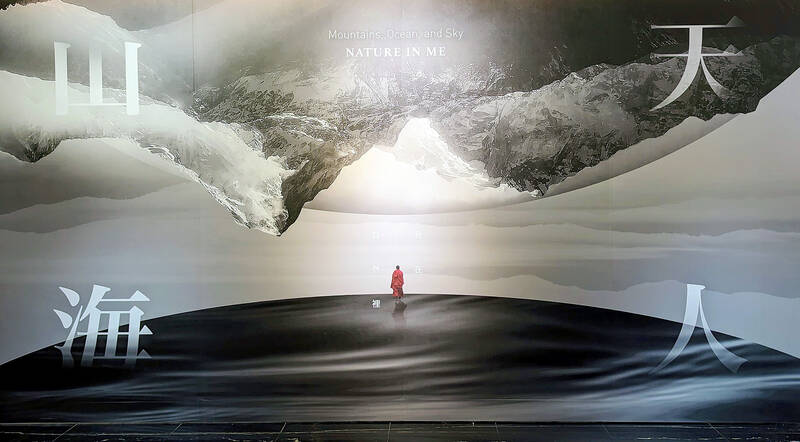
Photo: Han Cheung , Taipei Times
“Bringing the immense world, encompassing mountains, ocean and the sky into an exhibition, we attempt to immerse humans in nature,” the introductory text states. It continues the excellent and thought provoking death exhibition’s exploration on life, seeking to “transcend the constraints of life and set our hearts free in the interconnectedness between humans and nature.”
Museum director Ma Yu-chuan (馬幼娟) says that that the exhibition is inspired by how people have damaged the earth due to their greed.
“Only by ... looking inward and correcting our behavior, can we ensure the sustainability of our ecosystem,” she says.
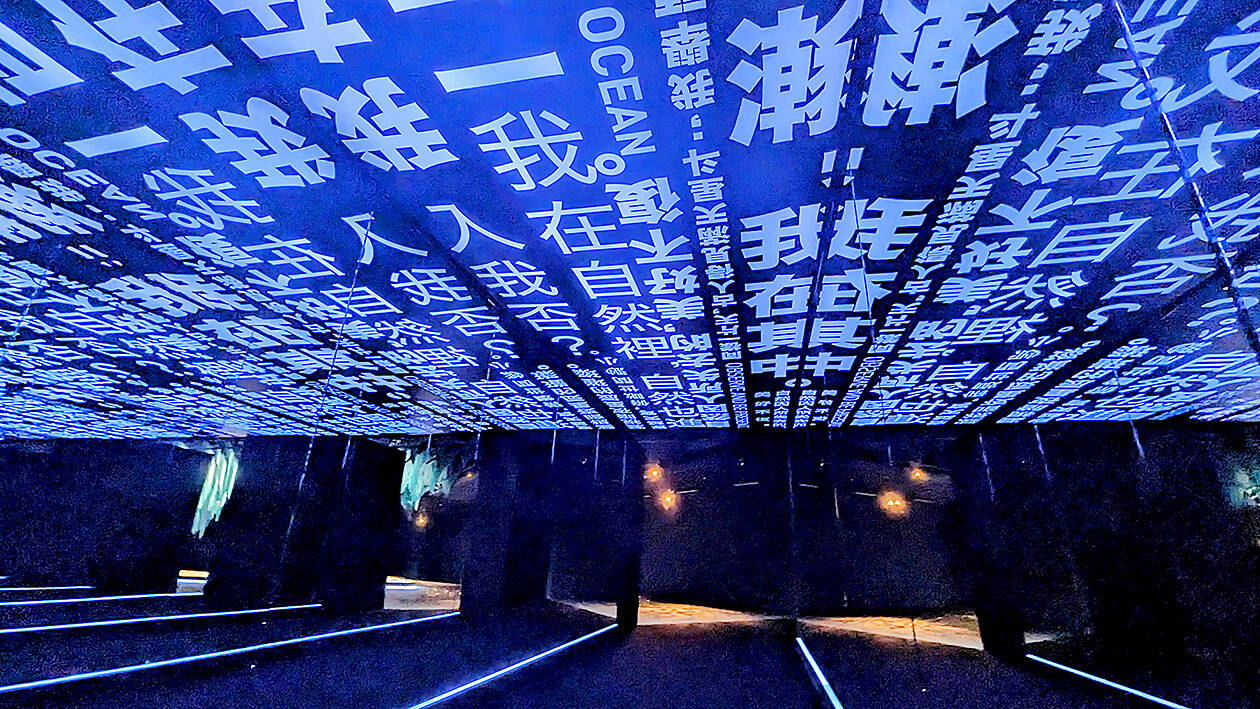
Photo: Han Cheung , Taipei Times
Compared to the exhibition on death, which was more information-driven and linear, this new show is more abstract and introspective: “I exist within all things, and all things exist within me.”
Each section opens with a quote and guide. “Don’t worry about your appearance, your physical form doesn’t restrict you,” the first display says. I then pass through a plastic, shimmering “water veil” into a room full of white threads hanging from the ceiling. The surrealness works here as my senses become distorted, further detaching myself from the outside world. The words of naturalist John Muir coax me forward: “And into the woods I go, to lose my mind and find my soul.”
I step into a room lined with swings, and what appears to be a dark, undulating ocean, which covers the floor and walls. I swing back and forth to the sound of the waves. It’s peaceful, but the swing is situated a bit too low, and I have to assume a certain position to keep the motion going, preventing me from becoming one with the waves.
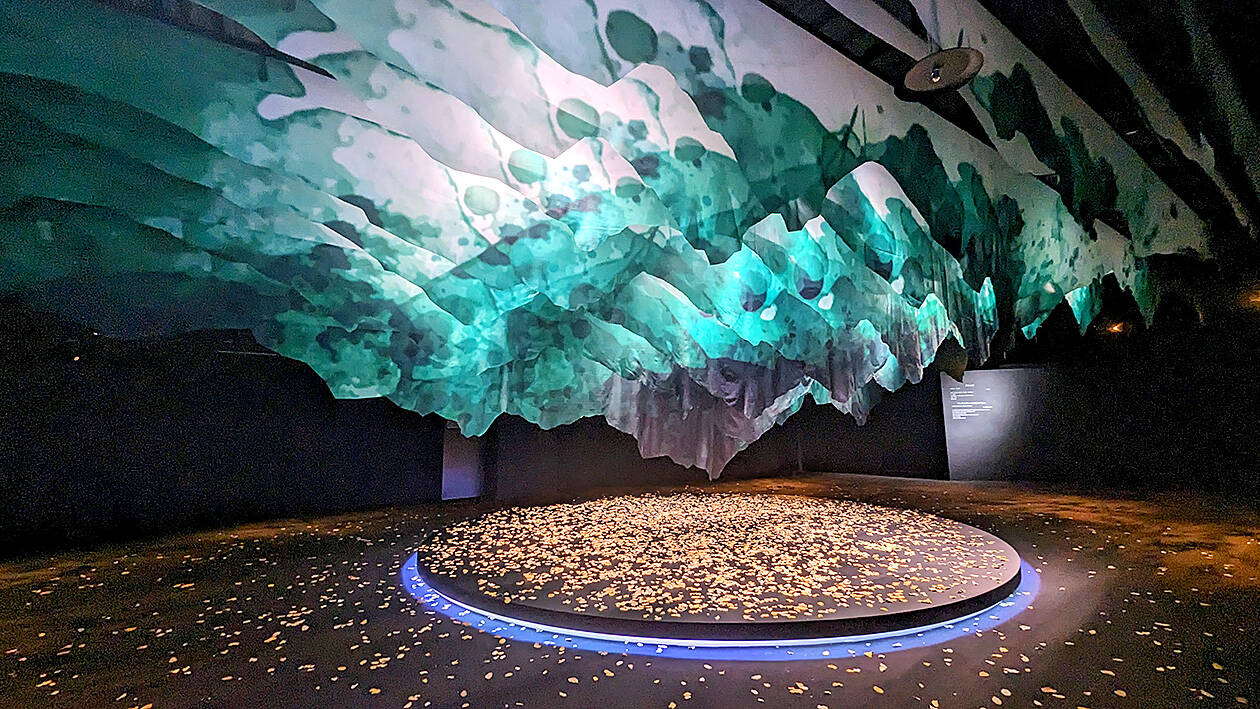
Photo: Han Cheung , Taipei Times
A corridor with sayings in large, bold print about being in the present and at one with nature leads to the next room, which features mountains and leaves — the latter of which makes me yearn for the real thing.
I wonder about the decision to imitate natural scenery with cold, inorganic materials, even if they’re eco-friendly. Is it supposed to create dissonance and make us rethink our existence in the concrete jungle? The museum is situated on a busy road next to a large shopping center in New Taipei City’s Yonghe District after all.
The last section, representing a walk among clouds, is otherworldly, but again the displays are made of a sort of a plastic film instead of wool or anything warm and fluffy. The lights inside the translucent clouds dim and brighten, revealing messages written by visitors. I can’t help but read the notes, which jolt me back to reality. I wander through the room several times, but I’m actually preoccupied with thinking of what my note should say. That is a sort of reflection, I suppose, and there’s rarely time to do that these days, much less in an eerie alien-like landscape.

Photo: Han Cheung , Taipei Times
I suppose it’s the type of show that will evoke quite different reactions depending on the visitor. How would it feel for someone who has little or no connection to nature in their everyday lives?
As someone who likes getting lost in the outdoors, has a garden and tries to do his part for the environment, the exhibition didn’t really make me think more about nature. I did, however, find it soothing and it made me reflect on my relationship to the world and raised questions about representations of the environment.
Before leaving the museum, I revisited the Hall of Life’s Journey, which details the journey of a human from birth to death through religious rituals and artifacts. It’s a jarring contrast from the nature exhibition, going from the abstract to the concrete, but one that is comprehensible.
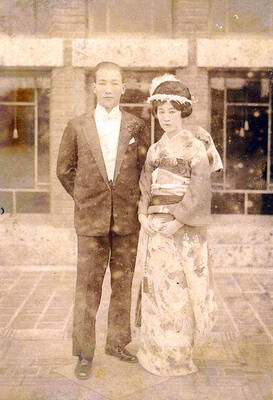
Sept. 1 to Sept. 7 In 1899, Kozaburo Hirai became the first documented Japanese to wed a Taiwanese under colonial rule. The soldier was partly motivated by the government’s policy of assimilating the Taiwanese population through intermarriage. While his friends and family disapproved and even mocked him, the marriage endured. By 1930, when his story appeared in Tales of Virtuous Deeds in Taiwan, Hirai had settled in his wife’s rural Changhua hometown, farming the land and integrating into local society. Similarly, Aiko Fujii, who married into the prominent Wufeng Lin Family (霧峰林家) in 1927, quickly learned Hoklo (commonly known as Taiwanese) and

The low voter turnout for the referendum on Aug. 23 shows that many Taiwanese are apathetic about nuclear energy, but there are long-term energy stakes involved that the public needs to grasp Taiwan faces an energy trilemma: soaring AI-driven demand, pressure to cut carbon and reliance on fragile fuel imports. But the nuclear referendum on Aug. 23 showed how little this registered with voters, many of whom neither see the long game nor grasp the stakes. Volunteer referendum worker Vivian Chen (陳薇安) put it bluntly: “I’ve seen many people asking what they’re voting for when they arrive to vote. They cast their vote without even doing any research.” Imagine Taiwanese voters invited to a poker table. The bet looked simple — yes or no — yet most never showed. More than two-thirds of those
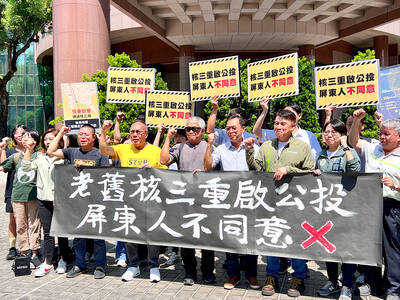
In the run-up to the referendum on re-opening Pingtung County’s Ma-anshan Nuclear Power Plant last month, the media inundated us with explainers. A favorite factoid of the international media, endlessly recycled, was that Taiwan has no energy reserves for a blockade, thus necessitating re-opening the nuclear plants. As presented by the Chinese-language CommonWealth Magazine, it runs: “According to the US Department of Commerce International Trade Administration, 97.73 percent of Taiwan’s energy is imported, and estimates are that Taiwan has only 11 days of reserves available in the event of a blockade.” This factoid is not an outright lie — that
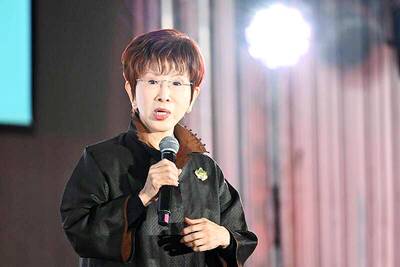
Former Chinese Nationalist Party (KMT) chairwoman Hung Hsiu-chu’s (洪秀柱) attendance at the Chinese Communist Party’s (CPP) “Chinese People’s War of Resistance Against Japanese Aggression and the World Anti-Fascist War” parade in Beijing is infuriating, embarrassing and insulting to nearly everyone in Taiwan, and Taiwan’s friends and allies. She is also ripping off bandages and pouring salt into old wounds. In the process she managed to tie both the KMT and the Democratic Progressive Party (DPP) into uncomfortable knots. The KMT continues to honor their heroic fighters, who defended China against the invading Japanese Empire, which inflicted unimaginable horrors on the